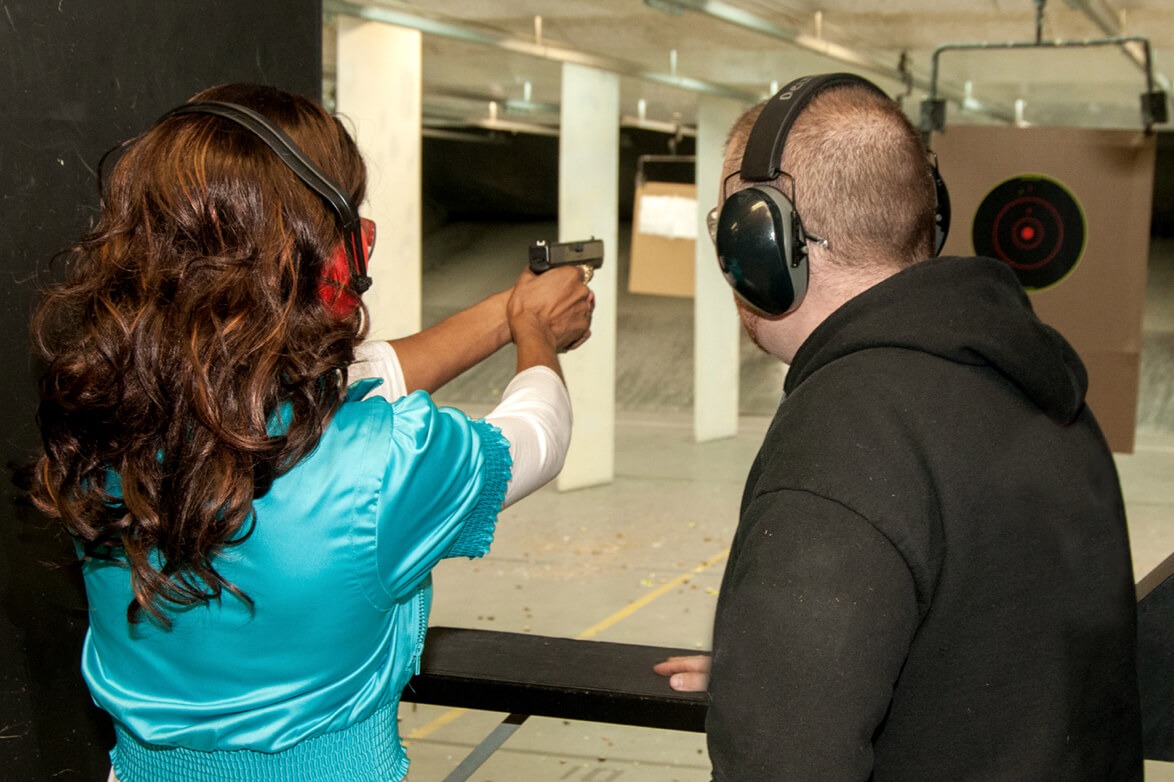 Back to News
Back to News
August 30, 2018
Defining the Business Model For Your New Firearms Range
You have the goal of building a great shooting range, and you are confident it will successfully fill a niche in your area. How do you get started?
The first step should be establishing a “business model.”
A Business Model is Not a Business Plan
Simply put, a business model describes how you will create ongoing value for your customers and make a profit. Defining your model is important for several reasons:
- When your staff is operating your facility with intent and focus on a model that defines how the entire business should work, you will find that every decision and action can be measured against your business model and provide feedback. That feedback provides the foundation on which future adjustments can be made.
- A well-designed business model forces you to focus on differentiating your range from the competition and creating a better way to operate than the existing alternatives.
- Your business model is the blueprint upon which you will build your business plan — a business model and a business plan are not the same things — and financial projections.
- Finally, your business model tells the story potential investors and bankers should want to hear and answers their No. 1 question: how will you make money?
Business Model Basics
Although there are various ways to tell your story, sound business models contain the following five elements:
- Identified Target Audience — What customer base is not being served in your area? Do those customers match the ones you want to attract? When creating your business model, it is important to clearly define your target audience, then identify the challenges to serving them and what your business will provide to remedy those challenges.
Keep in mind that expanding demographics in the shooting sports these days means two audiences you’d be keen to address will be women and the overall 25- to 34-year-old population, as there’s a good chance these two demographics are an overlooked opportunity in your area. In the same vein, hunters, modern sporting rifles and tactical offerings or survival-focused customers might be hungry for local retail and training options, or maybe its shooters looking for either a less-expensive option than what the competition offers or, on the other end of the spectrum, a VIP experience.
If you’re unsure what audience of consumers hasn’t been capably addressed in your region, NSSF’s Customized Market Report is perhaps the best tool for learning about the population demographics in your area and your competition. Armed with this information, your target market should become more clear.
- Value Proposition — Once you identify your target customer, you need to determine what that customer values. That could be anything from lower retail, range and range membership prices to something more exclusive or higher-end than what the competition offers.
The combination of your business vision — and your vision is important, as even if your area needs a range focused on tactical shooting, if you have no interest in tactical shooting, you’re unlikely to be successful in operating such a range — and the determination of what your customers value are what becomes your list of value propositions. Each item on this list should be tied to a product or service you offer in a manner that capitalizes on your intended proposition. Based on your value proposition, you can then create a formal mission and vision statements that not only support and define and drive your business model, but also coincide with the types of products and services your target audience desires. In other words, the formal mission, vision and values statements act as a road map of how your employees should conduct business as they ask themselves, “Is what I’m doing and saying now contributing to the company’s mission, vision or values?”
- Anticipated Key Resources — With your target audience and value proposition defined, you next need to identify the resources your business has and will need to meet its needs. This can include specialized training curriculum, next-generation range equipment, exclusive suppliers and strategic partnerships, a VIP lounge, unique retail offerings, a robust social media and website presence and extensive customer email lists, just to name a few.
- Revenue Stream Development — Beyond your key resources, one of the clearest ways to differentiate your model from the competition is to develop revenue streams unique to your market. Each revenue stream, at a minimum, should be designed to give your business a competitive advantage at a minimum and, ideally, introduce an entirely new profit center in your market. Let’s look at an example.
If the known competition is regarded as the inexpensive option that fosters a shoot-and-leave mentality with its customers, then creating a destination shooting experience would be something to consider as part of your model. Such a plan can be achieved by adding food and beverage options, a lounge area and shooting competitions that encourage your customers to spend time and money in your business both before and after their actual shooting time on the range. Next-generation ranges today are also adding event offerings to their revenue streams, with packages designed for everything from birthday and bachelor/bachelorette parties to corporate team-building functions. These specialized events are offered separately from members-only and public events such as sports watch parties and vendor specials, which also support revenue streams.

- Customer Demand Strategy — How will you reach, acquire and keep your target audience, both at the launch of your new business and on an ongoing basis? Building customer relations and a growing interest in your business is imperative to the business’ viability. Your strategy should not only include getting customers in the door the first time, but plans for special events, outside and in-store advertising, consistent website and social media updates and regular customer email teasers that keeps them coming back. The strategy should also focus on monthly members-only events and specials to ensure membership retention.
Getting to the Top with Your Business Model — and Staying There
With your business model defined, you are ready to start developing your business plan and financial projections. Innovation is a continuous process, so your business model should also be flexible. That can mean it includes upgrading your range equipment as new technology enters the market, regularly reviewing pricing of comparable offerings from your competition and making sure your pricing is in keeping with your model and reconfiguring revenue streams to meet customers’ changing demands. These things and others will ensure you can adapt as the shooting sports market changes, maintain relevance as a market leader and support the growth that is paramount to your plans.
About the Author
Jeff Swanson is co-founder and an owner of a “next-generation” range in Oklahoma, and the Managing Member of NexGen Range Consulting. An attorney, entrepreneur and business development consultant with more than 23 years of experience, Jeff and his team created NexGen Range Consulting to help new and existing range owners across the country create their own “next-generation” facilities. Jeff also serves on NSSF’s Range Action Specialists Geam and can be reached via email at [email protected], or by contacting NSSF Member Services.
You may also be interested in: How to Attract New Customers
Categories: BP Item, Featured, Ranges, Top Stories









